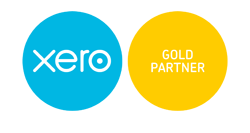Benefits of Direct Australian Share Investments in Superannuation
There are significant benefits associated with taking an independent, individually managed approach to investments in Superannuation. This is particularly true as investment balances grow and retirement planning commences.
Australian Superannuation funds are under the spotlight as the retirement system adapts to ageing demographics and longer life expectancies, and the retirement savings pool grows to become an increasingly large asset on the Nation’s balance sheet. The Superannuation Guarantee (SG) was introduced over 30 years ago and the system has matured. Funds under management have since grown to $3.4 trillion (as at the end of December 2022).
With increased scale comes increased regulation. Consequently, a range of investment performance tests have been levied on Australian funds by APRA in 2021. These tests ‘benchmark’ the performance of Superannuation funds against a range of selected indexes depending on their risk profile. Funds that underperform these benchmarks are shamed (first year), and then closed to new business (second year). This ‘big stick’ approach has been effective at reducing fees across the board as fund performance is measured after fees. However, it has also led to increased ‘herding’ of Super funds around the main benchmarks, and an increased focus on benchmark risk, rather than absolute risk.
Direct Australian share investments provide a compelling alternative to this one-size-fits-all approach. They provide opportunities to increase long-term investment returns, save on tax, as well as manage important risks in retirement.
Control, momentum, and patience
The ability to hold individual Australian shares in your investment portfolio is an important control lever. It allows investors to focus on the quality of the companies they own (quality of management, future prospects, business model), rather than being at the mercy of global macroeconomic factors and broad index returns. There have been ‘lost decades’ in investment markets before, with little growth in the broad indexes. Having the flexibility to own more focused investments can create opportunities in these environments.
Momentum is another key benefit of being able to hold individual Australian Shares and having the ability to retain these investments over the long term. The old saying “let your winners run” applies here. The ability to let a shareholding make up a larger percentage of the portfolio than a benchmark might allow, can lead to significant performance benefits. As Financial Advisers, we often see the beneficiaries of this approach, with large holdings in successful Australian companies like CSL driving impressive investment returns over time.
Tax efficiency benefits
Australian companies tend to pay franked dividends, which means they pass on a tax credit and reduce the income tax payable to the shareholder. This increases the after-tax income return and, for investors on a nil tax rate (e.g. Superannuation balances in retirement phase), it provides a cash rebate at the end of the financial year. This is a key benefit to owning Australian Shares as an Australian tax resident, compared to income received from international shares.
Owning individual shares also provides the flexibility to sell assets in a tax-effective manner reducing unnecessary Capital Gains Tax events that can get triggered in pooled investments by other investors, and netting off potential gains and losses to improve tax outcomes.
Risk Management
Lastly, owning direct Australian Shares can protect against benchmark concentration risks. The main Australian share index is the ASX300, which has significant exposure to the Financials and Materials sectors (around 50%). In fact, the top 7 shareholdings, “BHP, CSL and the banks”, comprise almost 40% the total index investment. The future prospects of these seven companies will have a disproportionate impact on the performance of most Australian retirees.
While the main Super funds are increasingly forced to invest in line with the benchmark, an individually managed portfolio can diversify away some of these risks. Counterintuitively, direct Australian shareholdings can work to reduce portfolio risk, rather than increase it.
About the author
PJ provides proactive, strategic advice to help you invest with confidence, structure your affairs intelligently, and get the most out of your unique circumstances. Contact us today and ask to speak with PJ.
Peter-James Cameron is a Sub-authorised Representative (#1266801 ) of Synectic Wealth Pty Ltd (ABN 24 615 317 194) which is a Corporate Authorised Representative (#1250871) of Alliance Wealth Pty Ltd (ABN 93 161 647 007 | AFSL 449221) www.centrepointalliance.com.au. Synectic Wealth Pty Ltd is the financial services division of Synectic. Learn more here.
This information has been provided as general advice. We have not considered your financial circumstances, needs or objectives. You should consider the appropriateness of the advice. You should obtain and consider the relevant Product Disclosure Statement (PDS) and seek the assistance of an authorised financial adviser before making any decision regarding any products or strategies mentioned in this communication.
Sources:














